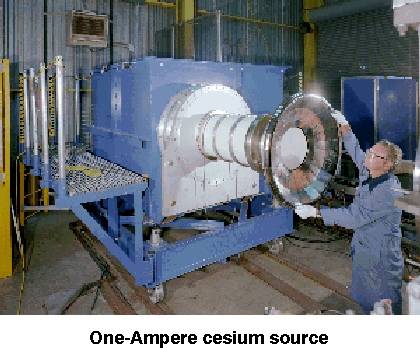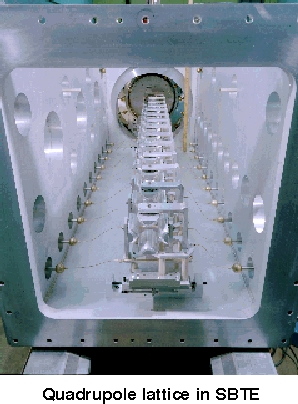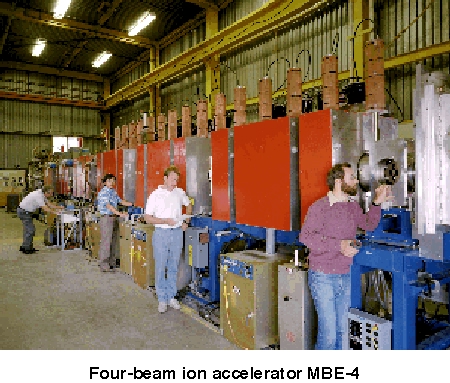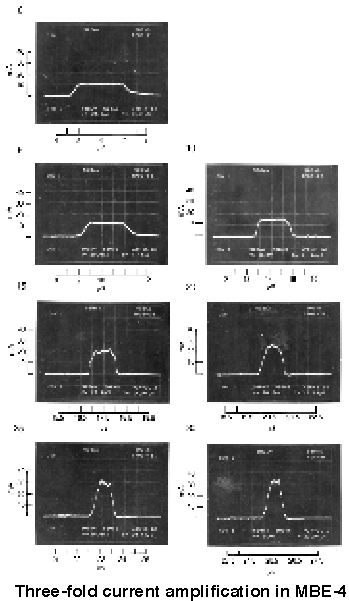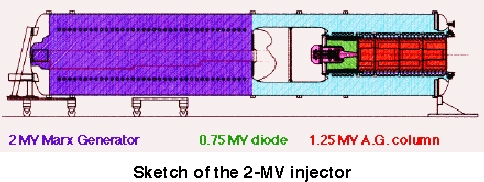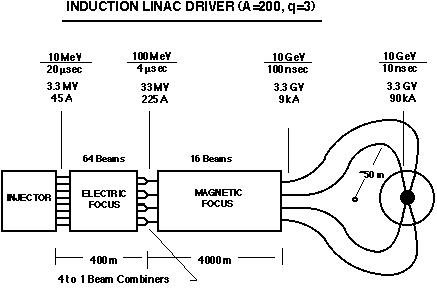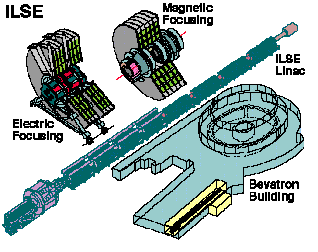Early HIF Experiments
The US heavy-ion fusion program is developing the
accelerator physics and technology data base for high-current
induction linacs with multiple ion beams and current
amplification. Before the formation of the Virtual National
Laboratory for Heavy Ion Fusion in 1998, many important
ion-accelerator experiments were carried out at Lawrence
Berkeley National Laboratory, among with the following are
particularly noteworthy.
By fine-tuning the Marx generator and extraction pulser
waveforms, we have improved the head-to-tail energy flatness
of the ion beam, reducing the energy variation to less than
+/-0.15% over the duration of the beam pulse, which is 1
microsecond or slightly greater. A picture of the injector
column is shown here.
We built and successfully tested an injector that provides
potassium ions at the energy, current, and emittance of a
full-scale driver. The beam is produced in a conventional
0.75 MV diode. It is further accelerated to 2 MV by a
electric-quadrupole-focused high voltage column. During 1994,
the new injector successfully met the design goals for beam
emittance (normalized edge emittance of less than 1 pi
mm-mr), energy (>2 MV), and current (800 mA of K+).
Detailed measurements of transverse phase space over a broad
range of parameters (in energy and current) have shown
excellent agreement with computer simulations done with the
three-dimensional particle-in-cell code WARP3D.
By fine-tuning the MARX generator and extraction pulser
waveforms, we have improved the head-to-tail energy flatness
of the ion beam, reducing the energy variation to less than
+/-0.15% over the duration of the beam pulse, which is 1
microsecond or slightly greater. A picture of the injector
column is shown here.
Photograph of the high-voltage
accelerating column
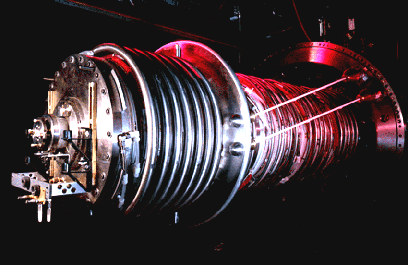
This apparatus is still in use. Recent simulation
and engineering work has reduced the beam-hollowing seen
during the early testing, and the column will serve as the
injector for the new High Current
Experiment (HCX).
The Induction Linac
Systems Experiments (ILSE) would have tested many driver
features
After 1986, much of the LBNL program effort was directed
toward developing a next step toward a driver called
ILSE, the Induction Linac Systems Experiments. ILSE
would have addressed many of the remaining beam-control and
beam-manipulation issues--many of them (including charge per
unit length or "line charge density" and beam diameter) at
full driver scale, others, such as ion kinetic energy, in a
scaled fashion.

